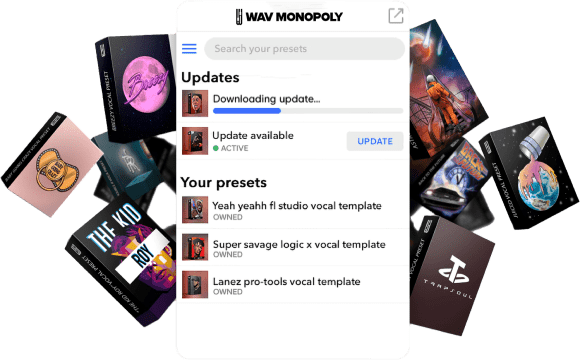LEARN MUSIC AND AUDIO PRODUCTION | Wavmonopoly TIPS AND TRICKS
What is Tempo in Music?

wavmonopoly June 8, 2022

When you’re listening to your favorite song, have you ever stopped to think about what makes it sound the way it does? Chances are, the tempo of the song is a big part of it.
But what is tempo, exactly? And why is it so important in music? In this blog post, we’ll explore these questions and more.
We’ll also take a look at how tempo can be used to create different moods in music. So if you’re curious about tempo, read on!
What does Tempo mean?
In music, the tempo is the speed at which a piece of music is meant to be played. It is typically indicated in beats per minute (bpm).
The faster the tempo, the more quickly the notes will be played. The slower the tempo, the more slowly the notes will be played.
Tempo can also be affected by other factors such as the number of notes in a measure, the note value of the notes, musical scores, and the overall mood of the piece.
Tempo is an important element of music because it can affect the way a piece sounds. For example, a fast tempo can make a piece sound exciting or energetic, while a slow tempo can make a piece sound more calm and relaxed.
The tempo can also be used to create different moods in music. For example, a happy song might have a fast tempo, while a sad song might have a slow tempo.
Different genres of music often have different tempos. For example, most pop songs have a fast tempo, while classical music has a slow tempo.
This is because the different genres of music are meant to create different feelings and emotions.
Is Tempo the same as Time Signature?
The answer is no, tempo and time signatures are not the same thing in music theory. Tempo is the speed at which a piece of music is meant to be played, while time signature is a way of organizing the music into measures.
The time signature is typically indicated by two numbers, one on top of the other. The top number indicates how many beats are in a measure, while the bottom number indicates what note value gets one beat.
For example, a time signature of 4/4 means that there are four beats in a measure and that the quarter note gets one beat. This is the most common time signature and is often used in pop and rock music.
A time signature of 3/4 means that there are three beats in a measure and that the quarter note gets one beat. This time signature is often used in waltzes and other slow dances.
The time signature can be thought of as the “pulse” of the music. It helps to keep the music organized and makes it easy to count the beats. The tempo can be thought of as the “speed” of the music. It determines how fast or slow the piece will be played.
In summary, the tempo is the speed at which a piece of music is meant to be played, while the time signature is a way of organizing the music into measures.
The two concepts are closely related, but they are not the same thing.
How can you find the Tempo?
Now that we know what tempo is, let’s take a look at how to find it.
The first step is to find the metronome marking. The metronome marking is a number that tells you how fast the piece should be played.
It is typically indicated in beats per minute (bpm). For example, a metronome marking of 120 bpm means that the piece should be played at 120 beats per minute. If you need any help finding the bpm of a track feel free to use our BPM Finder.
To find the metronome marking, look at the very beginning of the piece of sheet music. The metronome marking is usually written there. If you can’t find it, try looking in the margins or on the last page of the piece.
If there is no metronome marking, you can try to estimate the tempo by counting the number of beats in a minute.
To do this, count the number of beats in one measure and multiply it by the number of measures in one minute. For example, if there are four beats in a measure and the piece is two minutes long, the tempo would be approximately 160 bpm.
You can also try to estimate the tempo by listening to a recording of the piece. Start the recording and count how many times the metronome ticks in one minute. This number is the tempo in beats per minute (bpm).
Once you have the metronome marking, you can set the metronome to that tempo and start practicing.
Common Tempo Markings Explained

Now that we know how to find the tempo, let’s take a look at some of the most common tempo markings. There are many common tempo markings in practice including the German tempo markings and the Italian ones. But we have listed the most popular ones here.
Allegro:
Allegro is one of the most common tempo markings. It means “fast” in Italian. A piece with an allegro tempo should be played at a fast pace.
Andante:
Andante is another common tempo marking. It means “walking pace” in Italian. A piece with an andante tempo should be played at a moderate pace.
Adagio:
Adagio is a slower tempo than andante. It means “slow” in Italian. A piece with an adagio tempo should be played at a slow pace.
Presto:
Presto is one of the fastest tempo markings. It means “very fast” in Italian. A piece with a presto tempo should be played at a very fast pace.
Grave:
The grave is one of the slowest tempo markings. It means “very slow” in Italian. A piece with a grave tempo should be played at a very slow pace.
Largo:
Largo is another slow tempo marking. It means “wide” in Italian. A piece with a largo tempo should be played at a slow and broad pace.
Lento:
Lento is a slow tempo marking. It means “slow” in Italian. A piece with a lento tempo should be played at a slow pace.
Moderato:
Moderato is a moderate tempo marking. It means “moderate” in Italian. A piece with a moderato tempo should be played at a moderate pace.
These are just a few of the most common tempo markings. There are many others, but these are the ones you are most likely to come across.
How to Use Tempo Markings in Your Playing?
Now that you know what tempo is and how to find it, let’s take a look at how you can use basic tempo markings in your playing or set your own tempo with a moderate speed.
The first thing to keep in mind is that tempo markings are only suggestions. They are not hard and fast rules and you can practice different tempo shifts including decreasing tempo and a half note. You should always use your own judgment when deciding how fast or slow to play a piece.
That being said, tempo markings can be useful when you are first learning a piece. They can give you a general idea of how fast or slow the piece should be played.
Once you have a feel for the tempo of a piece, you can start to experiment with your own interpretation. For example, you might want to play a piece a little faster or slower than the suggested tempo.
You can also use tempo markings to create different moods in your playing with consistent speed.
For example, a fast tempo with the same speed can create excitement, while a slow tempo with the same rhythm can create a sense of calm.
Finally, keep in mind that tempo is just one aspect of your playing. It is not more important than other aspects such as rhythm and dynamics. Tempo is just one tool that you can use to express yourself through your music.
Summing Up
Tempo is an essential part of the music. It’s what gives a piece its feeling and groove. You may have heard the terms time signature and tempo before, but may not be sure of the difference between them. In this article, we’ve explained what tempo is and how you can find it in your pieces. We’ve also gone over some common tempo markings and their meanings. Now that you understand how to use these markings in your playing, go out there and experiment!
